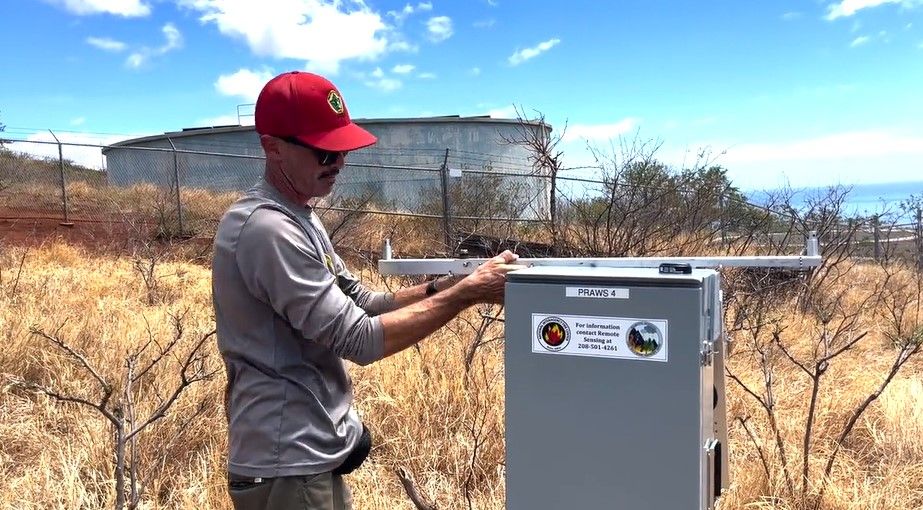09/19/23-USE OF REMOTE WEATHER STATIONS ARE HELPFUL WHEN MONITORING FIRE CONDITIONS
Posted on Sep 19, 2023 in Forestry & Wildlife, Main, Media, News Releases, slider, Wildfire| JOSH GREEN, M.D. GOVERNOR |
DAWN CHANG
CHAIRPERSON |
FOR IMMEDIATE RELEASE
September 19, 2023
USE OF REMOTE WEATHER STATIONS ARE HELPFUL WHEN MONITORING FIRE CONDITIONS
(LAHAINA, MAUI) – Remote automatic weather stations (RAWS) have been installed recently in Lahaina in areas with invasive grasses that can be vulnerable to wildfires. The technology enables the Division of Forestry and Wildlife (DOFAW) to collect data to predict fire behavior and monitor fire-stoking fuels.
These stations collect data including precipitation, wind speed and direction, air temperature, relative humidity, fuel moisture, and solar radiation for rangers and firefighters.
There are two stations in Lahaina, and one is above Mā‘alaea.
RAWS data is collected hourly and transmitted to a satellite, which then sends it to a computer at the National Interagency Fire Center (NIFC) in Boise, Idaho.
The data is helpful for wildland fire management and rating fire danger. There are approximately 2,800 RAWS units throughout the United States, Puerto Rico, Guam, and the U.S. Virgin Islands. There are 22 stations in Hawai‘i managed by the DOFAW.
RAWS units are solar powered and completely automated.
“There are currently three portables set up around Lahaina for more accurate local weather. One is ours, and two were ordered from the RAWS depot at NIFC. Not only do the fire departments look at the data but the data is used by weather researchers for forecasting and modeling,” said DOFAW Fire Protection Forester Mike Walker.
DOFAW staff regularly check the information online.
“We monitor the temperature and humidity to determine fire risk for the area. There are stations elsewhere that have cameras that enable early fire detection, hopefully we will be adding some cameras to our stations soon,” said Walker.
While the RAWS units may not be able to indicate whether there is an active fire, the information, and data the units collect are of significant value in monitoring fire threats.
“They are a great tool to determine fire risk, and we have two portable stations that can be deployed to monitor local fire conditions. One portable was deployed during the Leilani volcanic eruption on Hawaiʻi Island to monitor weather at a geothermal plant. The lava flow cut off access and we couldn’t get back to it for almost a year,” said Walker.
Each RAWS unit costs $25,000 to set up and another $1,000 each year per station to maintain, a bargain considering the importance of collecting this valuable data.
# # #
RESOURCES
(All images/video courtesy: DLNR)
Video – https://vimeo.com/863734861
Photographs –Lahaina Fire-Remote Weather Stations, Sept. 11, 2023
https://www.dropbox.com/sh/9vru0x3iqcs6fwy/AAChT6rRlesDlZjxwEork10sa?dl=0
Media Contact:
AJ McWhorter
Communications Specialist
Hawai‘i Department of Land and Natural Resources
[email protected]
